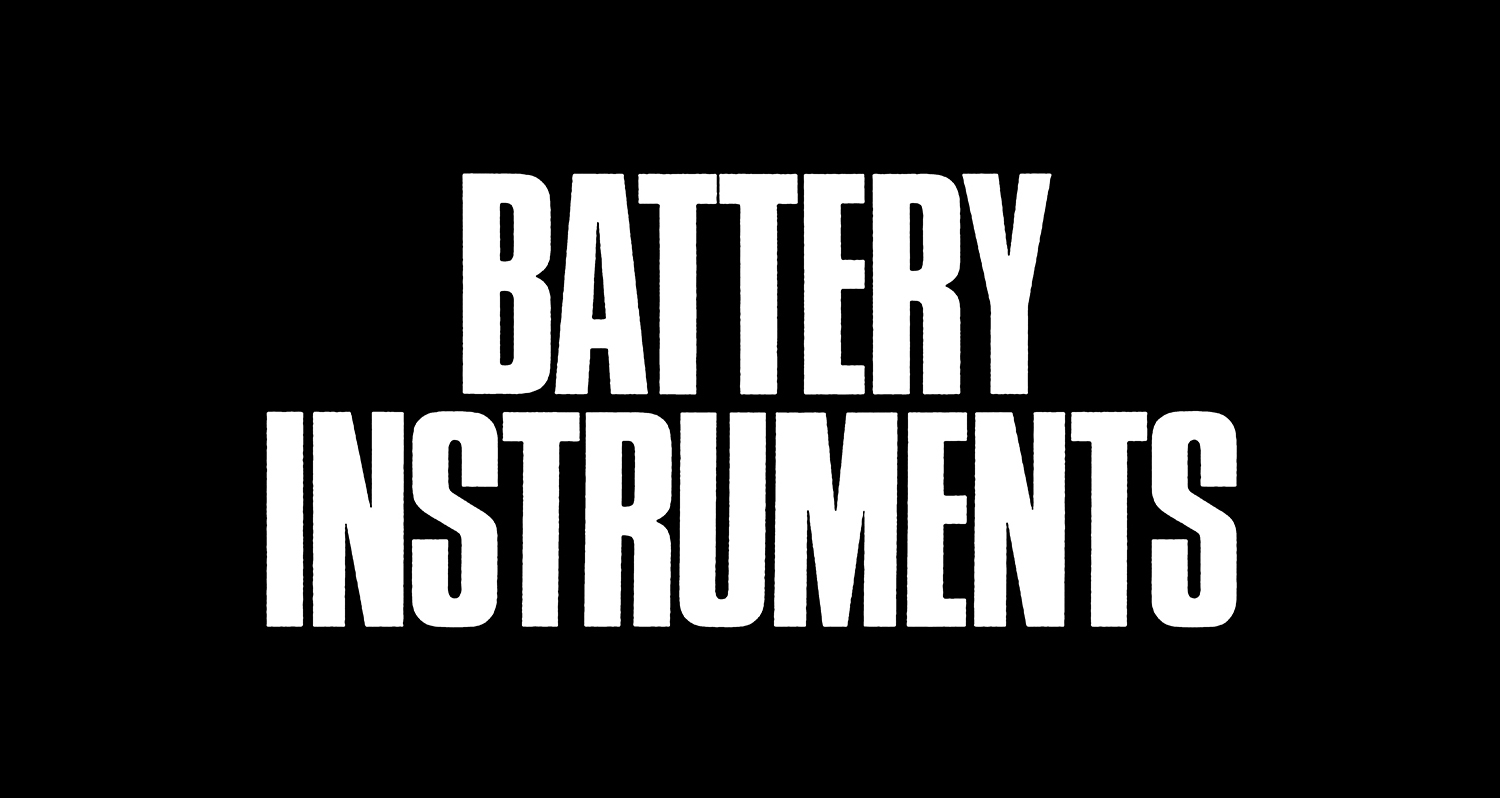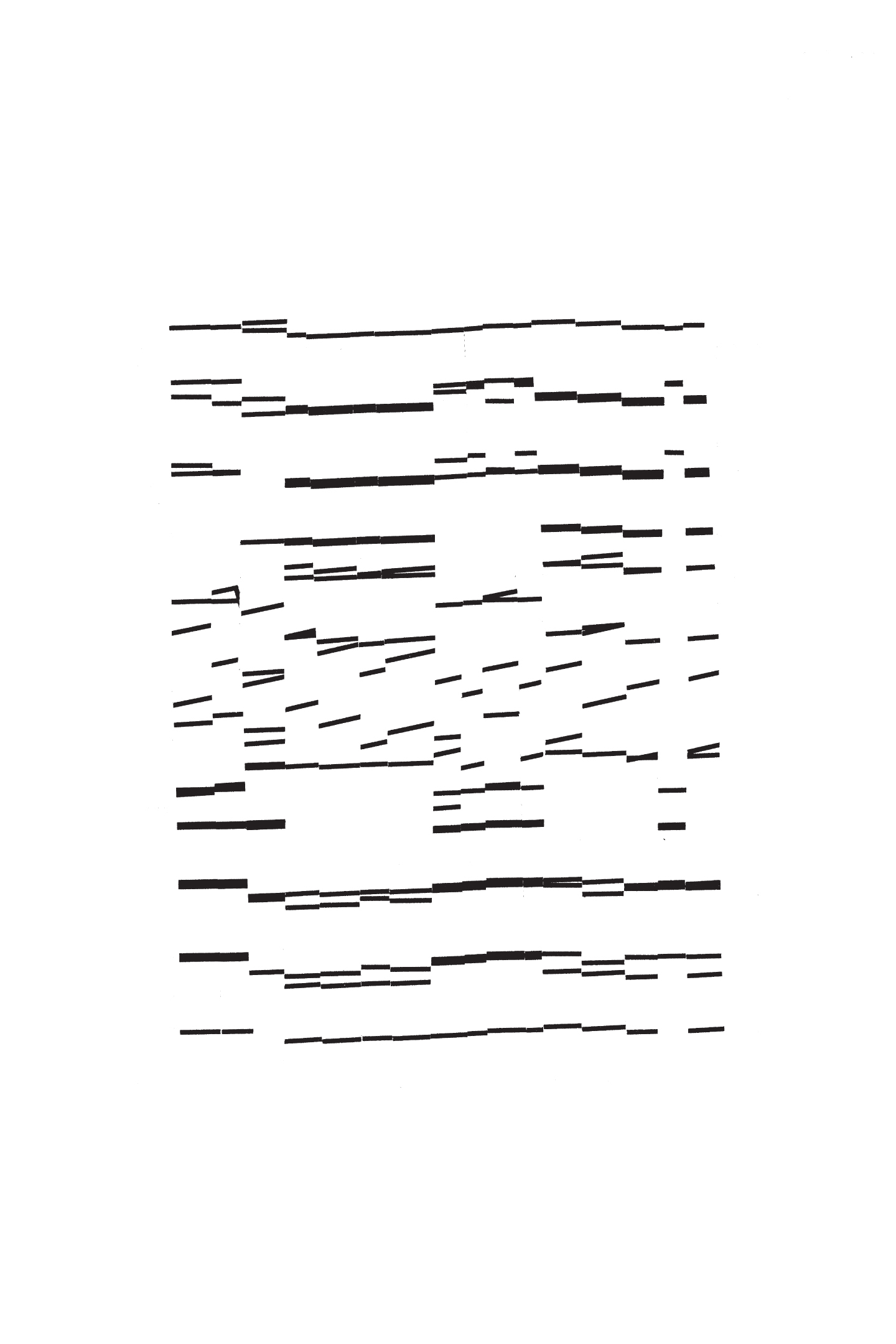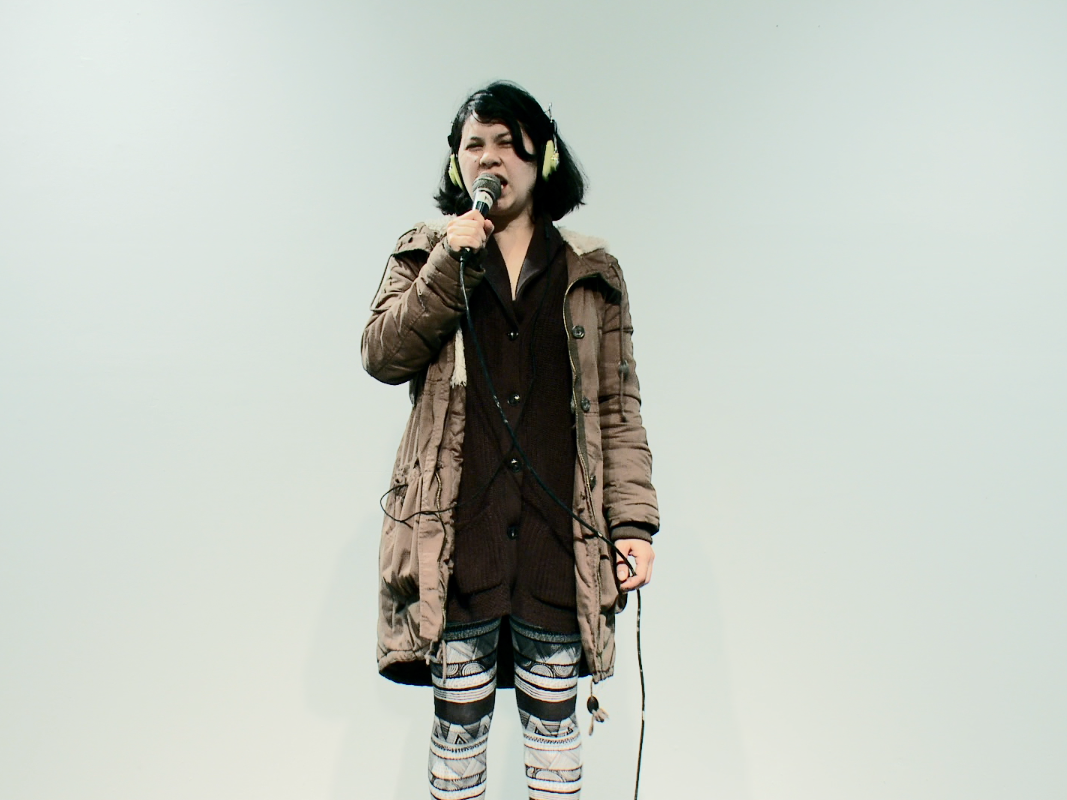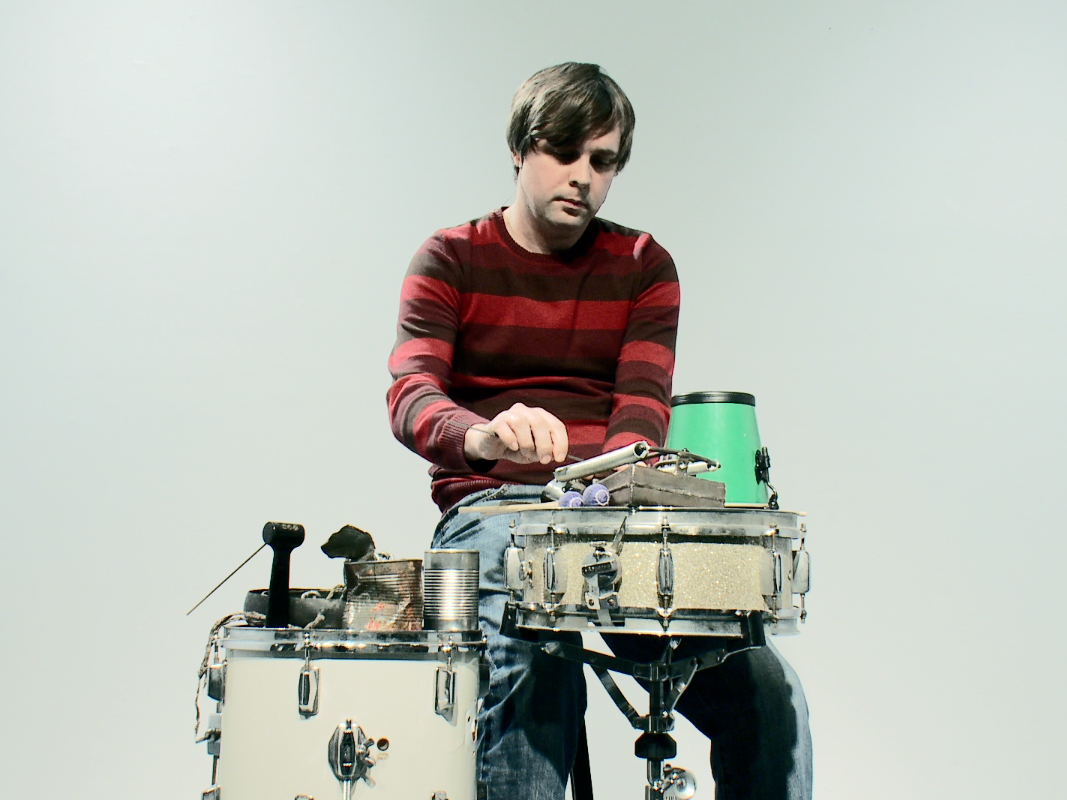
- This event has passed.
John Wiese: Battery Instruments
October 29, 2016 12:00 pm - 9:00 pm

BATTERY INSTRUMENTS
• 4-channel video/4-channel sound (2016 version) *Debut
• 4-channel video/2-channel sound (2012 version)
• 8-channel sound (2009 version)
Open from noon to 9pm. Reception from 7 to 9pm.
Free
Editions available at the event. More info TBA.
The cinema of ‘pure means’: John Wiese’s Battery Instruments as history lesson.
Bruce Russell
John Wiese’s Battery Instruments is a work that provokes a lot of thought. And ?rst among these thoughts for me is to consider what it might mean to designate him, on the evidence presented in this installation project, as a ?lm maker.
There was a tedious fashion a few years ago for composers to produce sound tracks for imaginary movies. Barry Adamson did a few once he had no gainful employment while waiting for the new wave of New Wave to pick up Magazine again. In a cultural sense this kind of thing is pure ‘makework’, like setting the unemployed to dig holes and ?ll them again. It’s also in my opinion an illegitimate extension of one art form into the territory occupied by another, and moreover one that tends to arise from a ‘narrative’ understanding of music. This seems to me one of the most pernicious pretensions of a jumped-up art form — the idea that music can communicate narrative meaning is pure Wagner, and that way lies, if not madness, at the very least the Nuremburg Rallies.
But if, on the other hand, we are willing to let sounds ‘be what they are’ — what can be ‘said’ — what can be ‘said’ with them?
One way to approach an answer to this question begins by ‘unpacking’ Battery Instruments to reveal what deeper meanings may be implicit beneath its austere surfaces. This process begins with the experience of getting into a box in which a media work is presented. This is what got me thinking about the cinema in the ?rst place.
Once inside this ‘magic lantern show’ of sound; the stuttering, glooping, belching and tapping that comprise the radically edited phonemes of the piece (circulating in their eight channels like planets in an endless dance of conjunction and epicyclical enjambment) instantly evoked references to both sound poetry, and then (when considered alongside Wiese’s practice as a typographer) one of the twentieth century’s less well-known but unimpeachably radical aesthetics of rejection — Lettrism.
And the business of Lettrism, apart from provoking scandals in a time when this was still possible, was mainly concerned with poetry and the cinema. Their approach to both was instructively thorough-going. As Serge Berna put it in 1952 with regard to film:
Today, faced with the imperatives imposed upon us by the cinematographic tradition, we must smash the double magic circle that protects this citadel. The ?rst is the sacred barrier within which one guards the credo: ‘Cinema-is-images’.
The radicality of these questions posed to art forms and media by the ?rst Lettrists remains substantially un-recouped in 2009. Isidore Isou’s strict requirement remains in force: that after its initial elaboration in the ‘amplic phase’, every form of expression should be puri?ed by ‘chiselling’ out the content of the form in order to reveal what is truly essential in it. And very clearly what is least essential to the cinema is the image.
Of course this kind of paradoxical mangling of concepts is easily done — saying that an artist unconcerned with moving images is engaged with the cinema! What pish — it’s the conceptual equivalent of shooting ?sh in a barrel: which is proverbially understood to be opposite of meaningful sport. But my sport here is decidedly meaningful, as will become apparent when we consider what really constitutes what we call ‘media’.
Understanding the process through which media arise is the key to Berna’s ‘smashing of the double magic circle’. Jonathan Sterne’s magisterial work The Audible Past examines exactly this question: ‘what makes media?’
This is so basic it is almost never asked, or even understood to be question-able. Sterne makes plain the way that what we accept as media appear to be so natural precisely because they are uniquely pervasive forms of rei?cation. And rei?cation is only perceptible as such by a somersault of the mind precisely because it has the appearance of natural inevitability. These social realities may not be questioned precisely because the prevailing social and economic relations assert that they can ‘be’ in no other way.
We generally assume that media are identical with technologies. Yet as Sterne makes plain, media are much more than this, they are “recurring sets of contingent social relations and social practices” which cohere around technologies. In Bourdieurian terms they are technologies in association with a speci?c habitus.
Sterne explicates this by showing how sound technologies in their earliest phases have very loose connections with media — the telephone, for instance, at some periods was used for broad.casting and seemed to have a great future in that realm. At the same time the radio was used primarily for point-to-point communication, and even once it became articulated within broadcasting networks, it had an almost complete allergy to recorded music — to a degree which today seems quite inexplicable. Yet today we cannot conceive of a broadcasting telephony or a point-to-point radio network — which is why cell phones and Blackberry-type PDAs are considered ‘phones’ (albeit with additional characteristics), even though they are actually radios, because the social practices that structure their use make them so. Witness the branding of one of the most fully-featured and least ‘telephone-like’ of these devices as the iPhone. The actual technology which makes these work is not constitutive of their social reality qua media, but their ‘mode of use’ is — in this case point-to-point communication in a telephone network.
My point here is that Isou’s Lettrists (and by extension, John Wiese) are historically vindicated in conceiving a cinema which is not visual — for quite some time in the nineteenth century the sound recording was socially received as a concert performance media analogous to the soon-to-be-invent.ed cinema. People gathered together to hear phonographic performances. This tradition was of course revived in France following the invention of electro-acoustic music. And much later a group of French mavericks promoted a series of recorded works on the Metamkine label as ‘Cinema for the Ear’. Their meaning was not that these were ‘soundtracks’ or adjuncts to visual narratives, but that they were, in and of themselves; ?lms.
Which brings us back to Battery Instruments. The other characteristic of Wiese’s work that stakes its claim as cinematic is its emphasis on editing and repetition. Giorgio Agamben has written of Debord’s cinematographic work that its virtue lies in its wholehearted emphasis on the real core of cinema, which he de?nes as montage. In this Debord exposes his debt to his ?rst master, Isidore Isou. And what, Agamben asks, are the ‘transcendental conditions’ (to borrow a Kantian terminology) on which montage relies? They are: ‘repetition and stoppage’.
And the same may be said of Wiese himself. His work to date has proven that he is an ‘editor’s editor’ — he builds by dissection, cutting down to tiny blocks of sound which he then reassembles to create sound work which cannot in reality exist. Sounds don’t behave acoustically the way they behave in the work of John Wiese. Like all great artists he makes the world conform totally to his vision — or perhaps I should say: to his audition.
And this is certainly true of Battery Instruments. By recon?guring the classic audible elements of a rock band: guitar, bass, drums and voice — into independent channels of tightly edited ‘phonemes’, which chance then remixes into an impossible sound ?eld of sequential spatially distributed noise events presented within the miniature auditorium that is his cinematheque, Wiese simultaneously evokes the Lettrist cinema without images, and its reduction of poetry to far less even than words or syllables — to letters. And as Agamben has also observed: “stoppage shows us that cinema is closer to poetry than to prose”. It can counter syntactical limits with acoustic and metrical limits, as poetry does.
And as Battery Instruments does. Dissolving the form of rock music in the acid of montage, it then precipitates it again into the form of a poetic cinema of the ear. This is the cinema that Agamben has argued is a ‘pure means’ because, contrary to the prevailing Hegelian conception that the medium must disappear into the expression, it uses repetition and stoppage to draw attention to the medium, to prevent the false disappearance of the image into the absolute.
And John Wiese’s work is his medium — sound — rather than any illegitimate message grafted onto the waves which carry it to us. The message, which is shown in the form rather than signi?ed in the content, is the time-dissolving wager of audition itself, the kinematos which is implicit in all life.
(Essay from the original 2009 Battery Instruments monograph)


